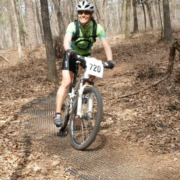How I Developed a Personalized Race Fueling Plan That Actually Works
How I Developed a Personalized Race Fueling Plan That Actually Works
In this Find Your Edge podcast episode, Coach Chris Newport shares her fueling and hydration plan. If you’ve ever bonked during a race, cramped halfway through, or just felt like your energy tank ran out too soon, then you know how critical a personalized fueling and hydration plan is. With a big off-road Olympic-distance triathlon coming up, Coach Chris Newport shares how she built her fueling and hydration plan—and how you can too.

💡 The Method: Track It, Try It, Tweak It, Trust It
I call it the 4 T’s Method, and it’s the foundation of how we coach athletes to create their fueling plans inside the Fueling & Hydration Bootcamp.
1️⃣ TRACK IT: Track sweat losses
Start by tracking your sweat losses during different workouts. This includes:
-
Pre/post body weight (even if your shoes are on before and afterwards)
-
Workout duration
-
Temperature & humidity (or dewpoint)
-
Type of exercise and intensity
-
Cooling factors (like fans or shade)
Why? Because your sweat rate changes based on all these conditions. I’ve built a sweat log over the years and reference it based on weather, sport, and intensity to estimate my losses and have it for you when you join the Fueling Bootcamp
2️⃣ TRY IT: Create the plan based on your losses
Once I know my sweat rate and electrolyte losses (from sweat testing), I plug that data into our hydration calculator.
For my upcoming race, I estimated:
-
~4 hours total duration
-
~2–2.5 hours on the bike
-
High humidity and temps (hello, Alabama!)
My hydration goal came out to 396 mg of sodium per liter, so went with Drip Drop—it fits my sodium needs, I tried it, and tastes good and settles great on my stomach/gut. I also add dextrose powder for carbs since I don’t love gels.
3️⃣ TWEAK IT: Make adjustments based on preferences, testing and race distance
I mix the Drip Drop + dextrose into one liter of water in my hydration pack. I freeze it partially before race day (pro tip: don’t fully freeze it or you’ll get nothing out of your bottle).
On the run, I’ll carry Clif Bloks and rely on aid stations for water.
All of this is based on what works for me—your plan will likely look different. That’s why we help you test products inside the Bootcamp.
If I were using this for a different distance or race, then I would tweak this slightly based on logistics.
4️⃣ TRUST IT: Execute the plan!
By race week, I’m eating familiar foods, following my usual habits, and not introducing anything new.
Race morning? Kodiak oatmeal cup + coffee (easy to pop in the microwave in the hotel room prior to leaving for race day)
Post-race? Chicken tenders, kale salad, and a milkshake = (tasty) carbs, plenty of electrolytes (sodium, potassium and calcium), protein and extra crucifers for that detox support based on my genetics. Boom. Recovery = done ✅
🙋♀️ But what about travel, nerves, sleep?
I’ve got a plan for traveling, including
-
Packing a cooler for the road trip
-
Bringing my own food for consistency
-
Prioritizing sleep with eye masks and quiet time
-
Know that Friday night sleep might be lousy—and that’s OK
Want to Build Your Own Plan?
If you want to stop second-guessing your race day nutrition and train, race, and recover like a pro, join the Fueling & Hydration Bootcamp.
We’ll help you:
✅ Understand metabolism during exercise to make smart choices for your needs
✅ Build a fueling strategy using our step by step simple method
✅ Navigate product choices (holy smokes, there’s SO MANY)
✅ Execute your plan with confidence
Let’s end the guessing game and start racing strong. 💪
Don’t Miss Out! Join the Fueling & Hydration Bootcamp
Either jump on the waitlist or join if it’s open here
Disclaimer: The information shared in this podcast is for educational and informational purposes only and is not a substitute for professional medical advice, diagnosis, or treatment. Always seek the advice of your qualified healthcare provider with any questions you may have regarding a medical condition or health goals. Never disregard professional medical advice or delay in seeking it because of something you heard on this podcast. Reliance on any information provided is solely at your own risk.


